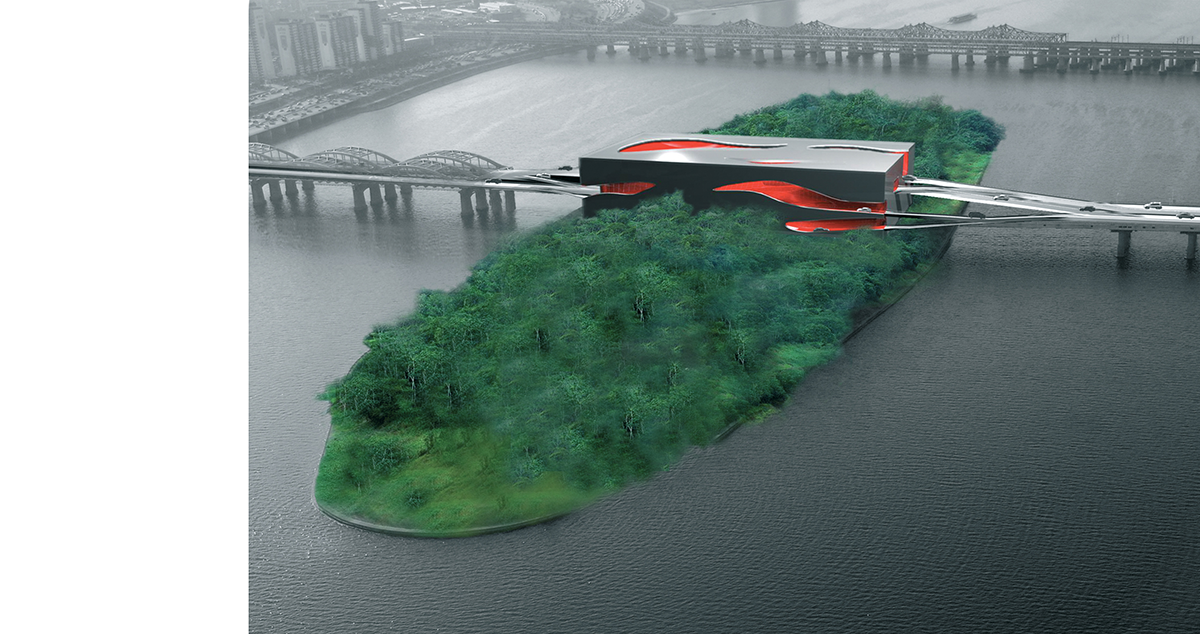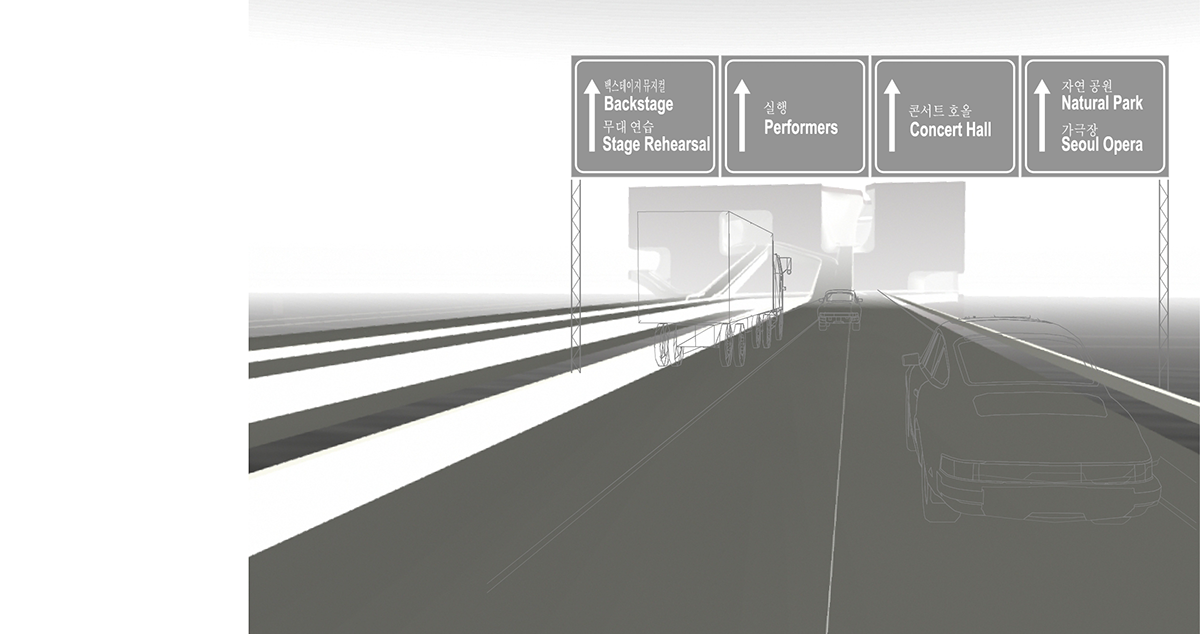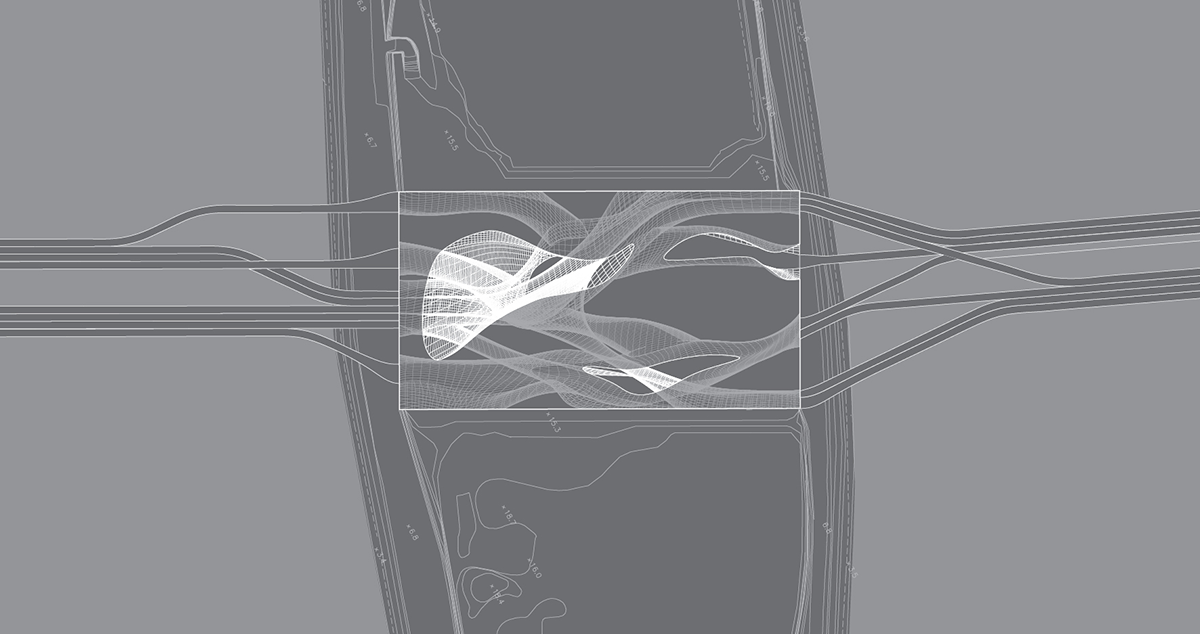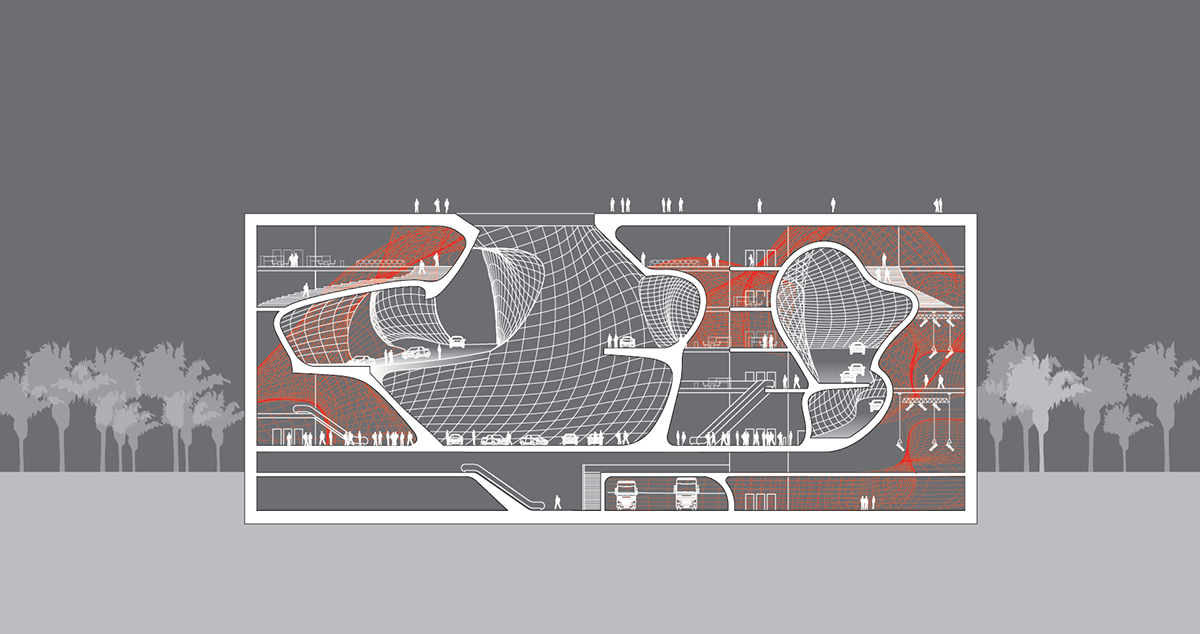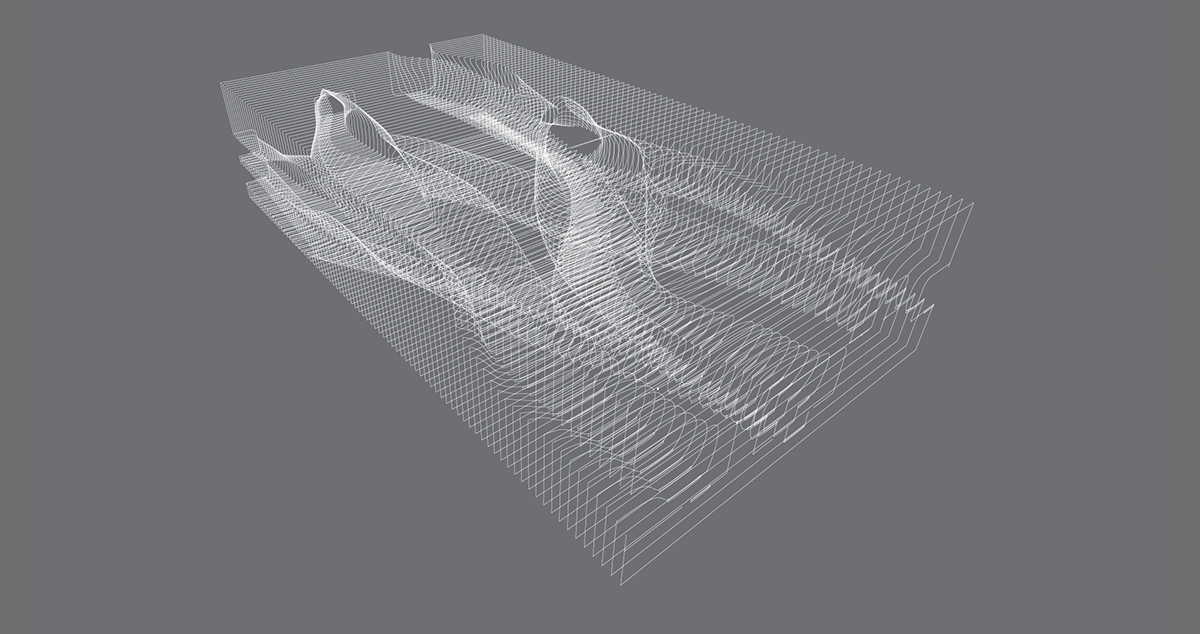Seoul Performing Arts Center
In our opinion, the impact of the Hangang Bridge as a major arterial
road within Seoul is too strong to be repressed. Instead of antagonizing
the obvious conflict between the street and the program on the island,
we decided to deal with it as a potential. Compared to other famous
landmarks such as the Sidney Opera, Nodeul Island is completely isolated
from its urban context. There are no pedestrians strolling around. The
most vital sign is the pulsating traffic.
Consequently we want to include the drive-through traffic as a key element of the project alongside the actual use of the building. The two components should fertilize and stimulate each other. The existing infrastructure and the projected building shall emerge as an unseperable unity, both profitting from each other. The permeating streets form voids that are cut out of the cube. They contain the motorized infrastructure and the public circulation. At some points they break through the outer perimeter of the cube to throw daylight into the inner parts of the building. Similar to urban spaces, the voids widen up, narrow down, cross bend and slope. The course of the streets is directly linked to the organisation of the program. The spatial dispersal of the infrastructure throughout the building leads to highly complex crossovers of the program and the urban infrastructural space of the city. These specific conditions of the site call for a re-interpretation of the landmark. The Seoul Performing Arts Center is an inversion of the classical notion of a landmark. It functions as a novel synthesis of infrastructural space and architecture.
Consequently we want to include the drive-through traffic as a key element of the project alongside the actual use of the building. The two components should fertilize and stimulate each other. The existing infrastructure and the projected building shall emerge as an unseperable unity, both profitting from each other. The permeating streets form voids that are cut out of the cube. They contain the motorized infrastructure and the public circulation. At some points they break through the outer perimeter of the cube to throw daylight into the inner parts of the building. Similar to urban spaces, the voids widen up, narrow down, cross bend and slope. The course of the streets is directly linked to the organisation of the program. The spatial dispersal of the infrastructure throughout the building leads to highly complex crossovers of the program and the urban infrastructural space of the city. These specific conditions of the site call for a re-interpretation of the landmark. The Seoul Performing Arts Center is an inversion of the classical notion of a landmark. It functions as a novel synthesis of infrastructural space and architecture.
Client: Municipal Government of Seoul
Location: Seoul, South Korea
Year: 2005
Status: Competition
Program: opera house, symphony hall, outdoor concert area, auxilliary functions
Team: with Martin Henn
Location: Seoul, South Korea
Year: 2005
Status: Competition
Program: opera house, symphony hall, outdoor concert area, auxilliary functions
Team: with Martin Henn
